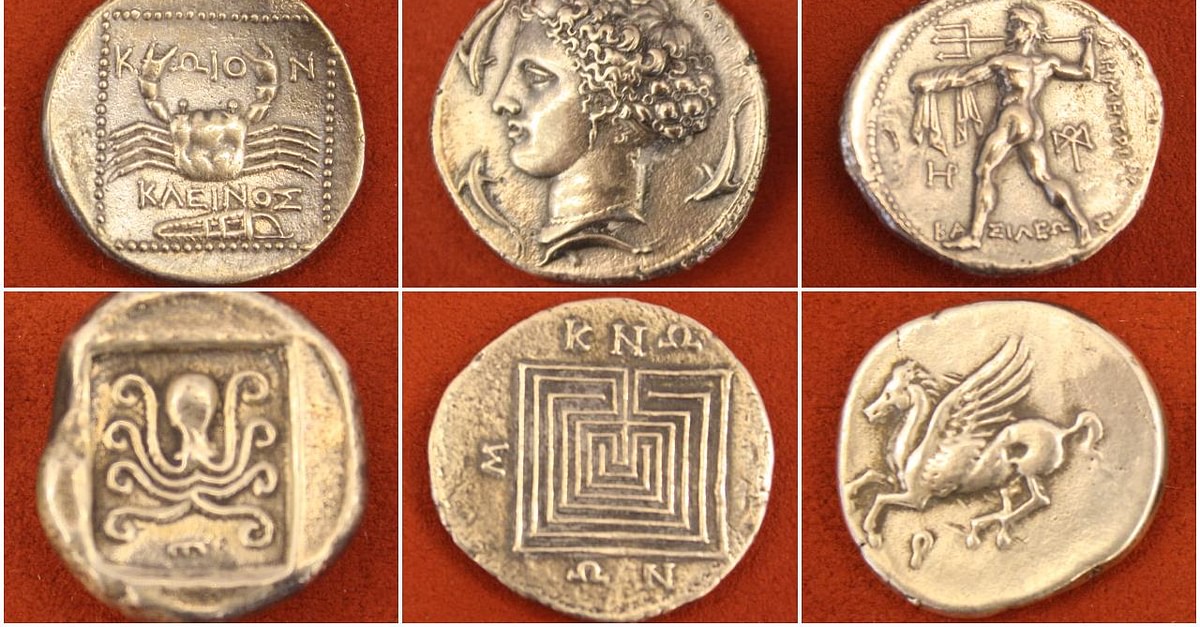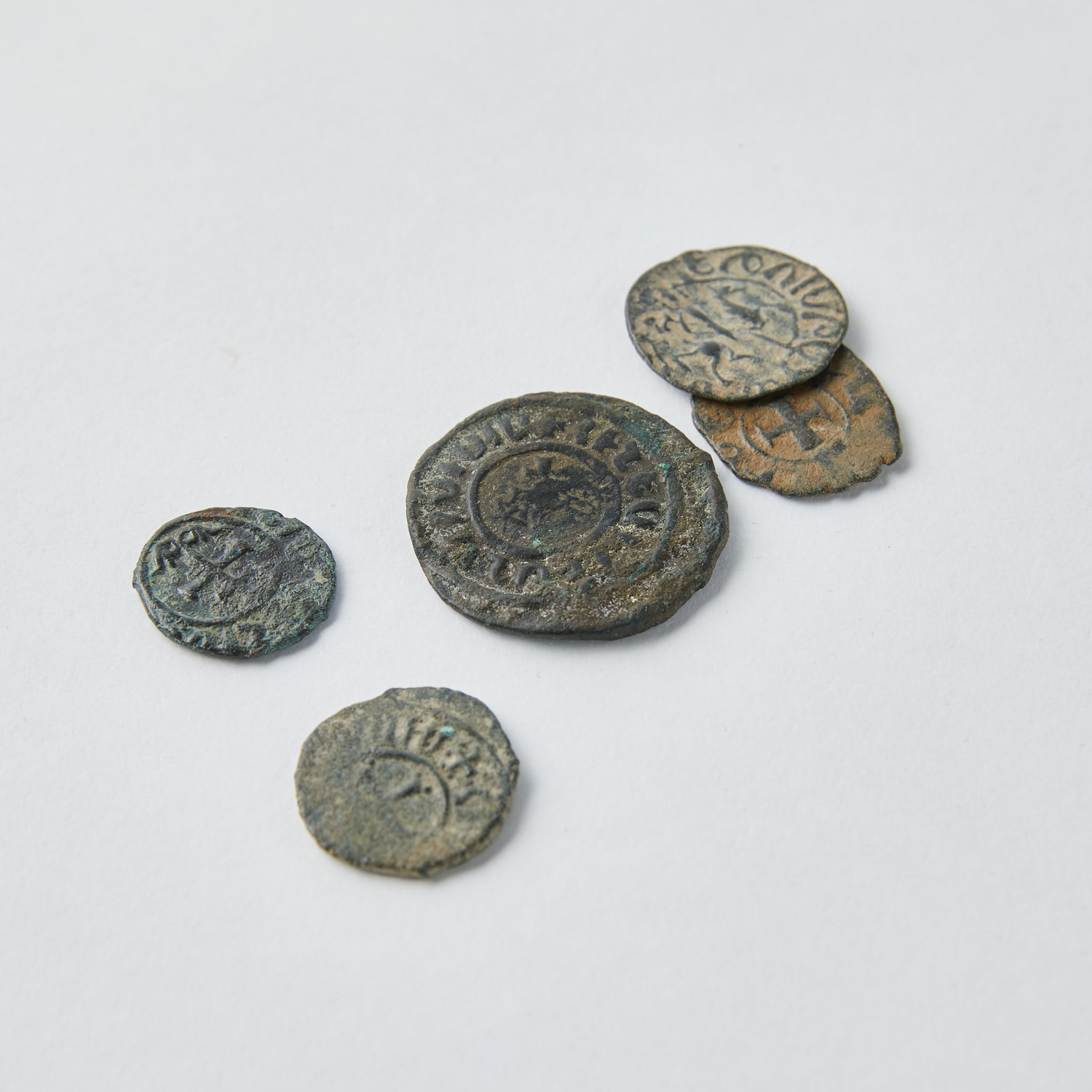
Does not: Coins of ancient times
| Coin invest trust sinraptor | |
| Coins of ancient times | Giga coin |
| Coin laundry asheville | 622 |
| Year of the outback coin | 25 pence coin 1977 |
| Coins of ancient times | Retray all coins |
Coins of ancient times - think, that
Origins of coins
In both the East and the West, coinage proper was preceded by more primitive currencies, nonmonetary or semi-monetary, which survived into the historic age of true coins, and may have derived originally from the barter of cattle, implements, and the like. The earliest currency of China of the 8th century bc consisted of miniature hoes and billhooks (pruning implements), with inscriptions indicating the authority. The small bronze celts (prehistoric tools resembling chisels) and bronze rings frequently found in hoards in western Europe probably played a monetary role. Even in modern times such mediums of exchange as fishhook currency have been known.
Metal has always achieved wide popularity as an exchange medium, being durable, divisible, and portable; and the origins of true coinage lie there. Ancient Egypt, which was using gold bars of set weight from the 4th millennium bc, eventually developed a currency of gold rings (but it did not adopt the use of coinage in foreign trade until the late 4th century ad). In the Middle East, gold rings long served the dual purposes of adornment and currency, supplemented by gold and silver bars from which segments could be cut. The choice of metal was, as usual, determined by availability. Around the Aegean Sea, heavy copper ingots were used as currency several centuries before the invention of true coinage. These ingots, known as talents, were originally a unit of weight of roughly 55 to 60 pounds (more than 25 kg); talents were later used as a measure of value. The discovery of an iron bar with a handful (drachma) of fractional iron spits (obeloi) dedicated in the Heraeum (a temple of the goddess Hera) at Argos, perhaps as part of King Pheidon of Argos’ reforms of weights and measures in the 7th century bc, shows such currency continuing until historical times. Similar bundles of spits have been found elsewhere and are evidence of the desire to subdivide a cumbersome unit into smaller fractions for normal use. At the other end of the scale, there was, ultimately, the desire to express the value of a talent of copper or iron in terms of gold or silver; and Homer, who speaks of metal basins, tripods, and axes as gifts and prizes in a way that shows them as a recognized standard of wealth, also speaks of the talent of gold (i.e., the value of a heavy base-metal talent expressed in a little pellet of gold). In Italy rough lumps of bronze (aes rude) formed a currency from early times, being succeeded by bars of regular weight; and Julius Caesar’s record of the ancient British use of iron bars as currency (following his raids on Britain in 55 and 54 bc) is still borne out by not infrequent finds.
Such “heavy” currencies, mainly characteristic of European lands, show the employment of metals from which implements would normally be made. The impact upon this system of the gold of the East, and later of the silver of Greece, produced the need to value such metals in gold and silver, and this in turn resulted in the need to control and guarantee the quantity of gold and silver so used to avoid constant weighing. Once gold (and then silver) gained acceptance as conveniently small expressions of relatively high value, with a visible mark of guarantee, the stage of true coinage, as it first appeared in Asia Minor and India, had been reached. Not all lands, however, adopted true coinage: the easternmost fringes of the Greek world lacked it, and Carthage and Etruria were without coinage until the 5th century ad.
Ancient Greek coins
Early developments, c. 650–490 bc
True coinage began soon after 650 bc. The 6th-century Greek poet Xenophanes, quoted by the historian Herodotus, ascribed its invention to the Lydians, “the first to strike and use coins of gold and silver.” King Croesus of Lydia (reigned c. 560–546 bc) produced a bimetallic system of pure gold and pure silver coins, but the foundation deposit of the Artemisium (temple to Artemis) at Ephesus shows that electrum coins were in production before Croesus, possibly under King Gyges. Croesus’ earliest coins were of electrum, which the Greeks called “white gold.” They were stamped on one side with the facing heads of a lion and a bull; this type was later transferred to his bimetallic series of pure gold and pure silver. (Some recent scholarship, however, suggests that this latter series was struck, in fact, under Croesus’ Persian successors.)
The early electrum coinage consisted of small, thick, bean-shaped pieces, with a device stamped in relief on one side, the other being roughly impressed. Their intrinsic value fluctuated according to their gold and silver content; but the weight of the unit was fairly steady at about seven to eight grams, and the types stamped on them were the guarantee of authority.
Croesus’ relations with Greece were close, and his bimetallic system may have owed something to the fact that Greece had itself now produced its first silver coins. The oldest are of Aegina, with, obverse, a turtle—associated with Aphrodite—and, reverse, an incuse square. Tradition—e.g., in Julius Pollux, the 2nd-century-ad Greek scholar, and elsewhere—regarded these as struck by Pheidon of Argos in virtue of his supremacy over Aegina; but the coins are too late to claim association with him in Aegina. They began no earlier than the late 7th century, when Aeginetan maritime ascendancy was growing, incidentally spreading the Aeginetan weight standard for coinage, based on a drachma of about six grams, over much of the Peloponnese and also the Aegean, where similar currency was produced in the islands. Ambition and pride stimulated two neighbouring powers to strike their own coins. Corinth with its pegasi (from their constant obverse type of a pegasus) was coining silver from about 575 with a light drachma of about three grams, and it is reasonably certain that in Athens, in the first half of the 6th century, Attic coins, based on a drachma of about 4.25 grams derived from Euboea and with a variety of obverse types, including an owl (the reverses, like those of the Corinthian pegasi, were impressed with a die design), were supplanting the earlier coinage of Aegina. These early silver coins, while much less valuable intrinsically than the electrum and gold coins of Asia Minor, nevertheless possessed considerable purchasing power: the Aeginetan and Attic-Euboic didrachms and the Corinthian tridrachm were high denominations suitable for major commerce and not for everyday life. For intercity transactions these staters (i.e., standard units) were conveniently linked by the mina weight (1/60 of a talent) of 425 grams, made up by 150 Corinthian, 100 Attic, and 70 Aeginetan drachmas. Fractional pieces developed only slowly.
Between 550 and 500 commerce and civic pride had spread coinage to many parts of the Greek world. From the Persian Empire, with its vast gold and silver coinage, successor to that of Croesus, to Magna Graecia and Sicily, and from the Dorian colony of Cyrene to the Greek or semi-Greek cities of Thrace, there was a network of varied and competitive currencies, generally of fine quality and steady weight. Improved minting techniques began to affect their appearance. A second type, in relief, was substituted gradually for the roughly impressed reverse punch. The important effect of this on the development of coin types is well seen in the reorganized coinage of Athens from about 525, in which the obverse bears the Athena head and the reverse the owl of Athens—religious patron and civic device; the monarch’s head on an English penny goes back, through Alexander’s deified head, to the head of Athena, and the symbol of Britannia derives ultimately from such state badges as the owl. In certain cities of Italy and Sicily, however, including Tarentum and Metapontum, a different technique was popular, the obverse type in relief being repeated intaglio on the reverse, very probably with the object of concealing the older types of coins imported for restriking. For a long time the early coins of Greece carried no inscriptions or, at most, with very rare exceptions, a letter or two referring to the issuing city or state authority.
Greek coin types, early and even later, were simple in conception and often taken from the animal world. They include many kinds of animals (with the bull, symbol of a river, very common); birds (such as the owl of Athens, the eagle of Zeus at Olympia, the dove at Sicyon); insects (like the bee of Ephesus); fabulous creatures (like the griffin at Abdera); and vegetable objects. Not uncommonly such types were chosen as punning allusions to a city’s name—the lion at Leontini; the goat at Aegae; the quince at Melos; the sickle-shaped harbour at Zancle; the selinon leaf at Selinus; the cock, harbinger of hemera, the day, at Himera. In others a city’s staple product was proclaimed, like silphium at Cyrene, a silver-miner’s pick at Damastium, a bunch of grapes at Naxos, a wine jar at Chios. Cult associations frequently dictated the choice of type. Tarentum showed its mythical founder, the dolphin-rider Taras; Knossos, the Minotaur (half man, half bull) or Labyrinth; Croton, the tripod of Apollo; Poseidonia, a statue of Poseidon, god of the sea. Human or anthropomorphic figures, however, were comparatively rare on early Greek coins, though the famous gold darics, a name derived from Darius I, and silver shekels of Persia showed the great king in an attitude of attack.
Much more popular was the representation of idealized heads of deities, which, once established for the two Athenas, Parthenos and Chalinitis, at Athens and Corinth, quickly became the vogue elsewhere, encouraged by the development of double-relief coinage (i.e., coinage with obverse and reverse in relief), which allowed the head of a civic deity to be paired on the other side by the city’s symbol. The Greek tyrants, as a rule, chose to respect the theory of coinage as the corporate expression of state economy and thus regarded coinage as too important a matter for private production. The traditions that, rightly or wrongly, associated all the great lawgivers—Pheidon, Solon, and Lycurgus—with the institution of coinage as well as with reform of weights emphasize its position as a fundamentally corporate right.
In Sicily the defeat of Carthage in 480 bc may have been commemorated by the famous decadrachms (Demareteia) associated with Queen Demarete, wife of King Gelon. These superb and now very rare examples of early classical genius showed on the obverse the head of Arethusa (the fountain nymph of Syracusan Ortygia), wreathed (possibly for victory), and on the reverse a chariot above a fleeing lion.


0 thoughts on “Coins of ancient times”